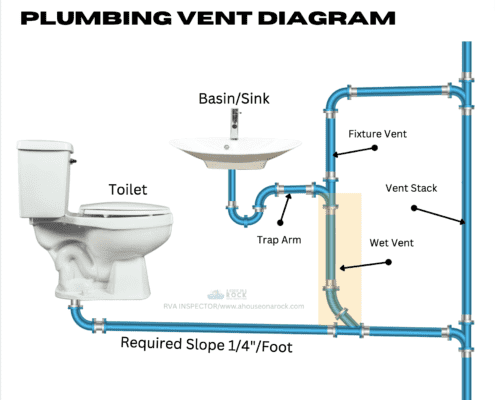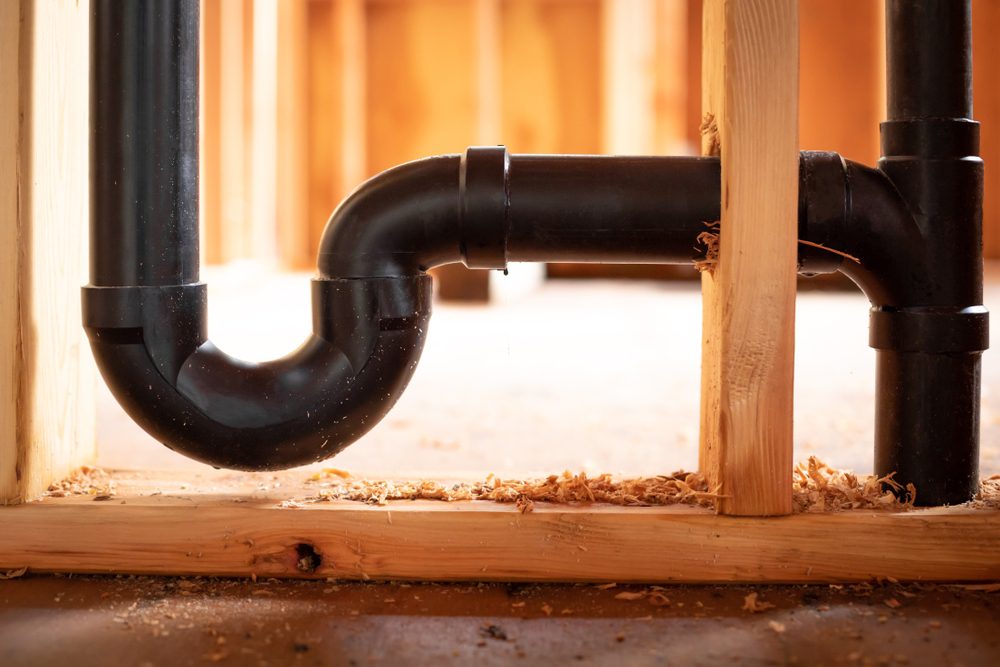The Significance of Ventilation in Residential Plumbing Systems
The Significance of Ventilation in Residential Plumbing Systems
Blog Article
What are your opinions about The Upsides of Proper Ventilation in Plumbing Design?

Correct ventilation in plumbing systems is commonly forgotten, yet it is important for maintaining the functionality and safety and security of your home's plumbing. Air flow assists manage air pressure, stop the buildup of dangerous gases, and ensure the effective elimination of waste. In this overview, we will explore the value of appropriate plumbing air flow, how it functions, and the benefits it gives your pipes system.
Exactly How Air Flow Works in Plumbing Equipments
Air Pressure Policy
Correct air flow keeps balanced air pressure within the plumbing system. When water flows through pipes, it displaces air. Without sufficient ventilation, this displacement can create negative stress, leading to slow down drains or siphoning of water from traps, which can trigger unpleasant smells to leak into the home.
Preventing Drain Gas Buildup
One of one of the most important functions of plumbing vents is to avoid sewage system gases, such as methane and hydrogen sulfide, from accumulating within the home. These gases can posture significant wellness threats and are highly combustible. Vent pipelines allow these gases to escape safely outside.
Helping in Waste Elimination
Air flow aids in the effective elimination of wastewater by protecting against airlocks in the drain system. When air can stream openly through the vents, it enables water and waste to flow efficiently via the pipes, lowering the risk of clogs and back-ups.
Advantages of Correct Air Flow
Boosted System Performance
Properly ventilated pipes systems run a lot more efficiently, with fewer obstructions, faster draining, and much less stress on the pipelines. This performance expands the lifespan of the plumbing system.
Improved Air High Quality
By stopping drain gases from entering your home, proper air flow adds to much better indoor air top quality, making your living atmosphere healthier and much more comfy.
Stopping Water Damage
Ample ventilation helps prevent water from being siphoned out of catches, which can bring about sewage system gases going into the home and causing water damages gradually.
Steps to Guarantee Proper Air Flow
Consulting Plumbing Codes
Always get in touch with regional plumbing codes when designing or modifying your pipes system. These codes provide the essential guidelines for correct venting and ensure your system meets security criteria.
Normal Examination and Upkeep
Normal evaluations can help determine prospective ventilation concerns before they end up being significant issues. Upkeep jobs, such as cleansing air vent pipes and checking for clogs, are vital for maintaining the system in good working order.
Professional Installation
For new installations or significant modifications, it's a good idea to work with a specialist plumbing professional. They have the know-how to make sure the ventilation system is appropriately designed and mounted according to code.
Recognizing Ventilation in Pipes
Ventilation in pipes refers to the network of pipelines that enable air to flow with the drainage system. These vents serve multiple objectives, consisting of controling air pressure within the pipelines, stopping sewer gases from getting in the home, and helping in the smooth circulation of wastewater.
Kinds Of Plumbing Vents
Main Heap Vent
The primary pile vent, likewise called the vent pile, is the primary vent in a plumbing system. It expands from the main drain align through the roofing, permitting gases to run away and fresh air to go into the system.
Branch Vent
Branch vents connect to the major pile air vent and serve specific fixtures, such as sinks, commodes, and showers. These vents guarantee that each component has ample ventilation to work correctly.
Air Admittance Shutoff (AAV).
An Air Admission Valve (AAV) is a one-way valve that permits air to enter the plumbing system without the need for a conventional vent pipeline expanding with the roofing. AAVs are frequently utilized in remodellings or areas where mounting a common vent is impractical.
Indications of Poor Ventilation in Pipes.
Slow Draining Fixtures.
If your sinks, tubs, or commodes are draining gradually, it could be an indication of poor air flow. Poor air flow can develop a vacuum impact, making it tough for water to drain pipes properly.
Gurgling Sounds.
Gurgling audios coming from drains pipes are often a result of air being drawn via water traps because of unfavorable stress in the pipes. This is a clear sign of not enough ventilation.
Unpleasant Odors.
Sewage system odors inside your home are a warning that your pipes system is not properly ventilated. This could imply that sewer gases are not being appropriately aired vent outside, bring about possibly harmful conditions.
Common Air Flow Blunders.
Insufficient Vent Sizing.
Utilizing undersized air vent pipelines can result in poor air circulation and pressure imbalances in the system. It's essential to make use of vents that satisfy the particular needs of your pipes system.
Improper Vent Positioning.
Positioning vents also far from the fixtures they serve can minimize their efficiency. Correct positioning makes sure that air can move freely and effectively through the system.
Disregarding Code Requirements.
Building codes give specific guidelines for plumbing ventilation. Disregarding these codes can cause a system that falls short to operate appropriately and might bring about pricey fixings or carcinogen.
Final thought.
Appropriate ventilation is a vital element of any plumbing system, ensuring that it operates effectively and safely. By recognizing the value of ventilation, recognizing the indicators of poor air flow, and taking steps to keep your system, you can stop costly concerns and safeguard your home's air top quality.
4 Things You Should Know About Your Plumbing Vents
What Plumbing Vents Are
Also called a vent stack, a plumbing vent is a vertical pipe attached to your drain line that runs through your roof. The plumbing vent pipe, or plumbing air vent, removes gas and odors from your plumbing system and allows fresh air to enter the pipes, helping the water to flow out of the drain pipes.
What Plumbing Vents Do
Plumbing vents have two basic functions. One of which is to allow unpleasant smelling wastewater and sewer gasses to escape your plumbing system instead of entering your home. Plumbing vent pipes are typically located on roofs, away from windows, to ensure the fumes exit the home completely.
The other function of the plumbing vent is to move fresh air into your plumbing system. This helps move water through every plumbing fixture in your house, like toilets and sink drains. Think of the way in which you need to let a little air into the bottle as you pour soda in order to make the drink flow smoothly.
Different Types of Plumbing Vents
True vent: This is the most common vent option. In simplest terms, a true vent is a vertical pipe attached to your drain line that exits through the roof. They often function as the main vent that other fixtures can connect to. Re-vent pipe or auxiliary vent: Attached to the drain line near specific plumbing fixtures, re-vent pipes run up and over to connect to the main vent. Common vent: Two plumbing fixtures installed on opposite sides of a wall are typically tied into the vent stack using something known as a sanitary cross. Wet vent: This venting option operates as a drain pipe and a vent at the same time. Wet vent drainage systems drain water from one fixture while venting the air from another. Although they’ve been used for over 100 years, wet vent systems have only recently been added to the plumbing code in many areas. If you’re planning on installing one in a bathroom remodel, make sure you check your local code prior to construction. Loop vent: For free-standing fixtures like kitchen island sinks, loop vents are ideal. These vent pipes run under the floor, rise from the P-trap, and create a loop inside the cabinet sink. Air admittance valve: An AAV is a one-way mechanical valve typically installed at the site of the plumbing fixture. AAVs allow venting to occur without having to tie into a larger venting system. They’re ideal for venting fixtures where you aren’t able to easily connect to an existing vent system. Common Plumbing Vent Issues
Although vent pipes typically don’t have water flowing through them, they’re still subject to many typical plumbing issues. For example, clogs are one of the most common problems associated with sewer vent pipes. If your vent pipe gets clogged, all of your plumbing fixtures tied into the vent stack will be affected.
A sink with a slow drain that bubbles and gurgles or a strong sewage smell around your toilet are both indicators that your toilet vent pipe is clogged. Because most vent pipes exit through the roof, old leaves, twigs or even a bird’s nest could be clogging the pipe.
Clogs in your vent pipe system cause a buildup of negative pressure, meaning that water won’t be able to flow out of your home very well. It’s similar to putting your finger over the opening of a straw to trap water inside. When you remove your finger, the water is able to flow out of the straw.
If you suspect you have any blockage in your vent, make sure you have a professional come examine the situation. Left unchecked, a blocked air vent can lead to other costly repairs, like leaks and sediment buildup.
Under Pressure
Pipe vents are essential aspects of a home’s plumbing system. Owning a home means learning about all sorts of things you never put much thought into before. But by understanding as much as you can about the important systems of your home, you can keep those budgets intact and those anxiety levels low.
https://www.homeserve.com/en-us/blog/home-improvement/plumbing-vents/

Hopefully you enjoyed our article on What Are Plumbing Vents and Why Are They Important?. Thanks so much for taking the time to read our short article. Those who enjoyed reading our blog entry plz make sure you remember to share it. I truly appreciate reading our article about Essential Plumbing Vent Pipes: Understanding Their Role.
Call Today Report this page